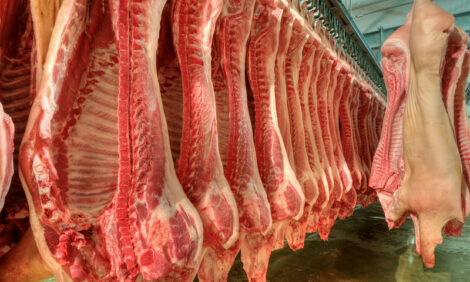



CME: Market Herd Expected to be Smaller This Year
US - DowJones Newswire’s quarterly survey of market analysts regarding their estimates of key numbers in this week’s USDA Quarterly Hogs and Pigs report indicate a rather high level of agreement on some of the key numbers, write Steve Meyer and Len Steiner.The spread between the high and low of most estimates is less than 3 per cent and some spreads are very, very tight (see Sep-Nov farrowings at 0.3 per cent from top to bottom. The high, low and average of analysts’ estimates appear in the table below. The numbers represent this year’s numbers as a percentage of one year ago. The high and low estimate are dropped from the average computations.

The market herd is expected to be 2.3 per cent smaller than last year
as of 1 December with the reduction spread quite evenly across the four
weight classes. Note that these weight classes are slightly different with
50 lbs. instead of 60 lbs. being the dividing line between the two lightest
classes. USDA’s National Agricultural Statistics Service (NASS) is
changing the categories to bring US data more in line with Canadian
data to facilitate aggregations across the two countries. NASS will publish
data for March 2008 through September using the new 50 lb. weight
breaks to provide some historical perspective for the new data.
Analysts expect the US breeding herd to be 3.4 per cent smaller than
one year ago That is slightly larger than the 3.1 per cent year-on-year decline
found in the September survey and report. Should the 3.4 per cent expectation
be accurate, it would mean the US breeding herd would number 5.855
million head, 206,000 head fewer than one year ago and 19,000 head
fewer than in September. That level would be clearly the lowest value in
the chart at right and in our data set that goes back to 1973. We suspect
that, given the rising productivity of the US breeding herd and the large
numbers of hogs that were in the US in the early part of the 20th century,
this is the lowest US breeding herd since sometime in the late
1800’s.
If Canada’s 1 January breeding herd is 5 per cent lower than one year
ago (the July and October counts were 4.9 per cent and 4.5 per cent lower than one
year earlier), the combined US-Canadian swine breeding herd will
number just 7.18 million head in the December-January time frame.
That is 7.4 per cent lower than the peak for the US-Canadian herd in October
2007. Productivity growth, however, will very likely result in a combined
US-Canadian pig crop for the fall quarter (September-November in the US,
October-December in Canada) that is only about 5 per cent smaller than the combined
pig crop for the fall of 2007.








